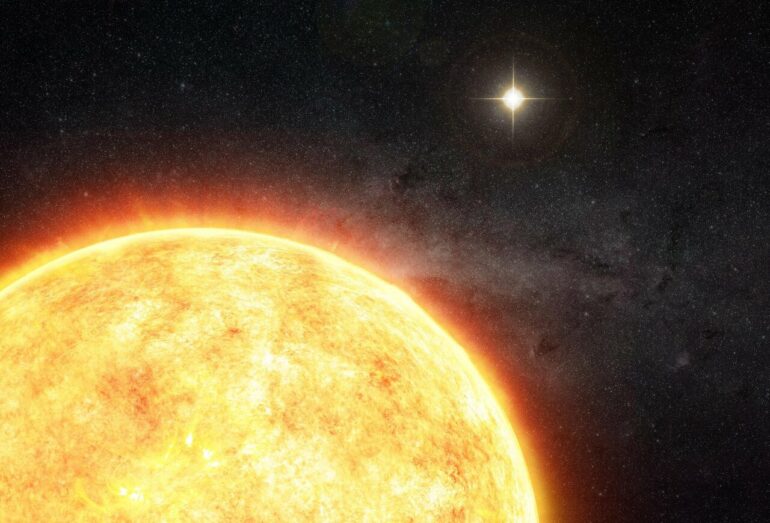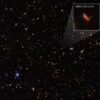Researchers from Western have shown that a fireball that originated at the edge of the solar system was likely made of rock, not ice, challenging long-held beliefs about how the solar system was formed.
Just at the edge of our solar system and halfway to the nearest stars is a collection of icy objects sailing through space, known as the Oort Cloud. Passing stars sometimes nudge these icy travelers towards the sun, and we see them as comets with long tails. Scientists have yet to observe any objects in the Oort Cloud directly, but everything detected so far coming from its direction has been made of ice.
Theoretically, the very basis of understanding our solar system’s beginnings is built upon the foundation that only icy objects exist in these outer reaches and certainly, nothing made of rock.
This changed last year when an international team of scientists, stargazers, and professional and amateur astronomers led by Western meteor physicists captured images and videos of a rocky meteoroid that flew through the skies over central Alberta as a dazzling fireball. The researchers have since concluded all signs point to the object’s origin being smack dab in the middle of the Oort Cloud.
The findings were published in Nature Astronomy.
“This discovery supports an entirely different model of the formation of the solar system, one which backs the idea that significant amounts of rocky material co-exist with icy objects within the Oort cloud,” said Denis Vida, a Western meteor physics postdoctoral researcher. “This result is not explained by the currently favored solar system formation models. It’s a complete game changer.”
All previous rocky fireballs have arrived from much closer to Earth, making this body—which clearly traveled vast distances—completely unexpected. State-of-the-art Global Fireball Observatory (GFO) cameras, developed in Australia and run by the University of Alberta, observed a grapefruit-sized (approximately 2 kg) rocky meteoroid. Using Global Meteor Network tools, developed for the Winchombe fireball, Western researchers calculated it was traveling on an orbit usually reserved only for icy long-period comets from the Oort Cloud.
“In 70 years of regular fireball observations, this is one of the most peculiar ever recorded. It validates the strategy of the GFO established five years ago, which widened the ‘fishing net’ to 5 million square kilometers of skies, and brought together scientific experts from around the globe,” said Hadrien Devillepoix, research associate at Curtin University, Australia, and the principal investigator of the GFO.
“It not only allows us to find and study precious meteorites, but it is the only way to have a chance of catching these rarer events that are essential to understanding our solar system.”
During its flight, the Alberta fireball descended much deeper into the atmosphere than icy objects on similar orbits and broke apart exactly like a fireball dropping stony meteorites—the necessary evidence that it was, in fact, made of rock. Conversely, comets are basically fluffy snowballs mixed with dust that slowly vaporize as they approach the sun. The dust and gases within them form the distinctive tail that can stretch for millions of kilometers.
“We want to explain how this rocky meteoroid ended up so far away because we want to understand our own origins. The better we understand the conditions in which the solar system was formed, the better we understand what was necessary to spark life,” said Vida.
“We want to paint a picture, as accurately as possible, of these early moments of the solar system that were so critical for everything that happened after.”
More information:
Denis Vida et al, Direct measurement of decimetre-sized rocky material in the Oort cloud, Nature Astronomy (2022). DOI: 10.1038/s41550-022-01844-3
Provided by
University of Western Ontario
Citation:
‘Unexpected’ space traveler defies theories about origin of solar system (2022, December 12)



